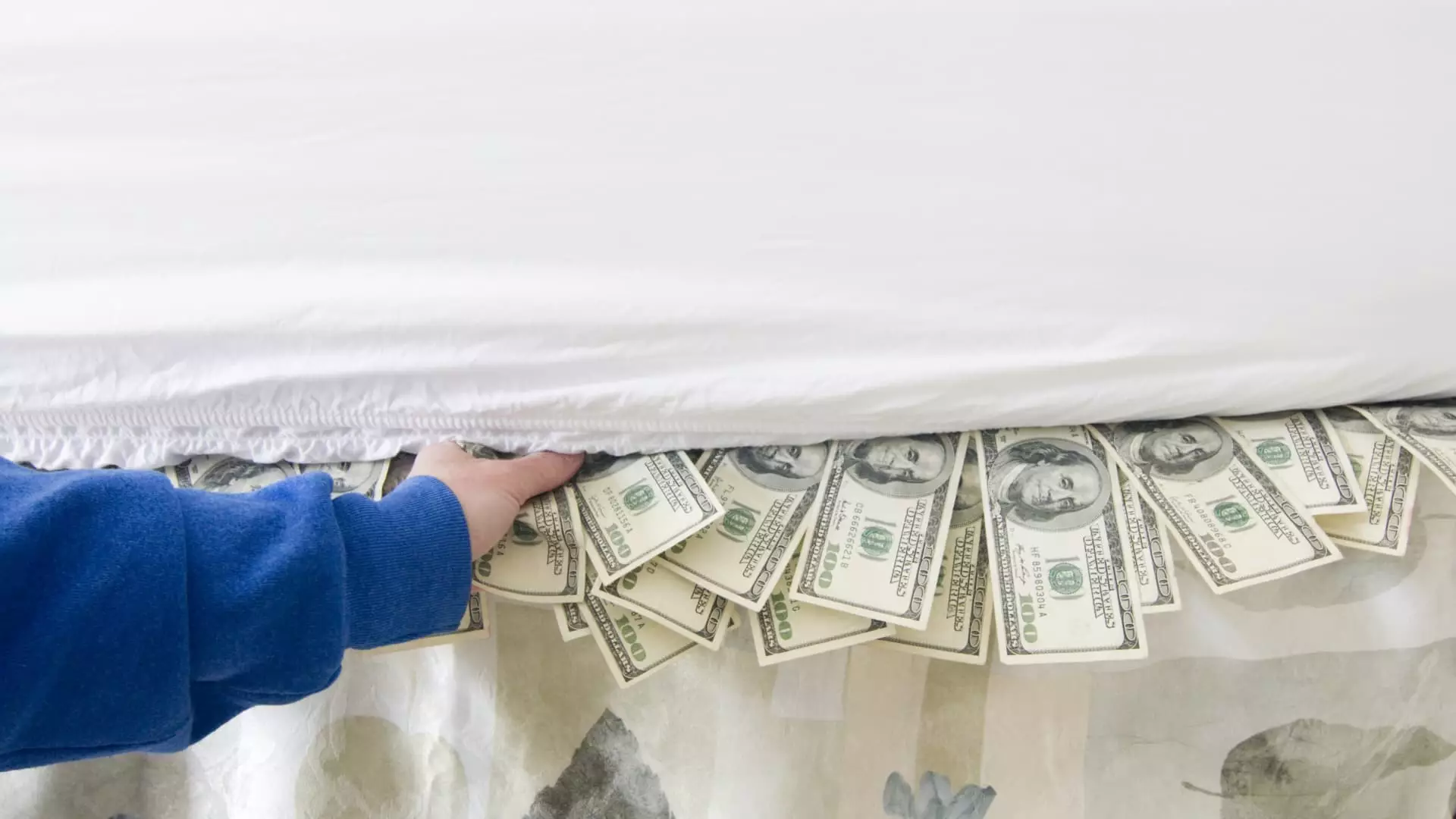In times of uncertainty, the image of cash hidden in the nooks and crannies of our homes offers an alluring sense of security. Survey data reveals that the average person holds approximately $544 in cash stowed away, often in less traditional hiding spots like freezers or secret compartments. While these practices may provide temporary peace of mind, the reality is that relying on physical cash can lead to significant disadvantages in either a financial emergency or natural disaster.
The comfort we derive from having readily accessible cash is understandable, yet this comfort can morph into a dangerous miscalculation. In-house savings create an illusion of control; the panic-induced choice to hoard cash can inhibit individuals from exploring more protective financial options. Storing money in a bedroom drawer or a cleverly disguised fake wall can feel like a smart move, but in reality, it poses several risks that undermine the very safety these individuals seek.
Underestimating Insurance Limits
Home insurance is frequently thought of as a comprehensive safety net, but it often falls short when it comes to cash, coins, and other similar valuables. Findings indicate that most home insurance policies impose shared limits, typically around $200 for covering cash losses. In a society that increasingly places a premium on financial security, relying on such a paltry allowance for cash can be foolhardy. Consider the implications: if you successfully find $10,000 tucked away in your living room, are you prepared to face the onslaught of questions when you file your claim?
Approaching cash from the lens of insurance caps is both counterproductive and alarming. The possibility of losing a significant amount of money due to insufficient coverage should serve as a wake-up call for those clinging to the notion of storing cash at home. Traditional banks, backed by the Federal Deposit Insurance Corporation (FDIC), provide a far more reliable solution that can protect one’s wealth from theft or disaster.
Cash: The Silent Eroder of Wealth
It’s not just insurance limits that undermine the wisdom of hoarding cash at home; keeping money in a physical form may lead to significant missed opportunities for growth. The landscape of finance is evolving, with high-yield savings accounts offering competitive annual percentage yields (APY) that far outpace traditional savings. While inflation gnaws at savings over time, investments have a proven track record of generating returns that can outstrip the impacts of inflation.
Opting to stash money under a mattress instead of pursuing earning avenues through banks or financial markets is tantamount to willingly sabotaging one’s future. The short-term comfort of cash is not worth the long-term losses incurred from inflation and missed opportunities.
Emergency Preparedness Through Strategic Savings
Acknowledging that cash can indeed play a critical role in emergency scenarios is essential; the key is finding the right balance. Experts advocate for maintaining enough money to cover daily necessities in case of an unexpected event, but they emphasize the importance of consolidating this emergency fund strategically rather than dispersing it across the house.
A “personal financial bag,” stocked with emergency cash, should ideally be stored in a secure, fire- and water-proof safe. This provides quick access while safeguarding the funds from disastrous events, offering a practical solution that combines preparedness with protection.
Trusting Financial Institutions Over Stash and Dash
In our increasingly digital world, one must question why so many individuals cling to the outdated practice of hiding cash around the house. The benefits of depositing money in a trusted financial institution are overwhelming: not only is your cash insured to a safe limit, but you also have the capacity to earn interest—money working for you rather than idling in physical form.
The convenience of digital banking and online financial transactions means you can access your funds instantly, eliminating the need for clandestine hiding spots. Being proactive rather than reactive is key in financial management; if the modern climate is teaching us anything, it’s that financial fluidity and security reside in institutions rather than in the fear-laden walls of our homes.
A Call for Financial Literacy
Ultimately, the journey from insecure in-house cash stashes to enlightened financial practices highlights the glaring need for greater financial literacy. That 10% of individuals locking away their cash in safes demonstrates how deeply entrenched fears can drive poor financial decisions. Investing in understanding how money works—how to save, invest, and grow—is not merely advisable; it’s essential for navigating the current economic landscape.
We must go beyond hiding cash and instead, embrace learning and adapting our financial habits that capitalize on security mechanisms provided by institutions. A culture of banking ignorance will only sustain financial vulnerability, which can be exploited during turbulent economic times. Let’s amplify awareness and foster a community that prioritizes understanding the true nature of cash and wealth management, so we can secure our futures with confidence rather than outdated habits.


Leave a Reply